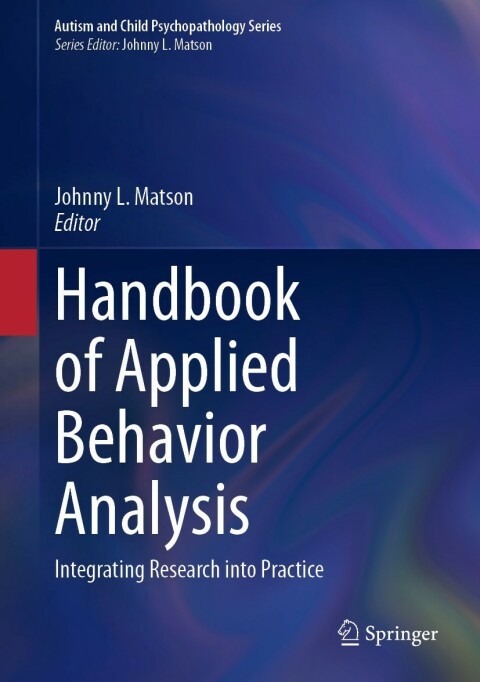Description
Efnisyfirlit
- Cover
- Front Matter
- Part I. Foundations
- 1. History of Applied Behavior Analysis
- 2. Ethics and Legal Issues
- 3. Social Reinforcers
- 4. Tangible Reinforcers: Conceptual Overview and Considerations for Practice
- 5. Automatic Reinforcement
- 6. Reinforcer Thinning: General Approaches and Considerations for Maintaining Skills and Mitigating Relapse
- 7. Behavioral Momentum Theory
- 8. Differential Reinforcement Procedures
- Part II. Applied Behavior Analysis
- 9. Prompt and Prompt-Fading Procedures
- 10. Stimulus-Stimulus Pairing
- 11. Psychological Modeling and the Treatment of Obsessive-Compulsive and Related Disorders
- 12. Conditional Discrimination: What’s in a Name?
- 13. Auditory–Visual Discriminations: Stimulus Control, Teaching Procedures, and Considerations
- 14. Instructive Feedback: Applications in Applied Behavior Analysis
- 15. Generalization
- 16. Response Interruption and Redirection
- 17. Error-Correction Procedures
- 18. Mand and Tact Training for Children with Language Impairment
- Part III. Basic Assessment Methods
- 19. Essentials of Observing Behavior
- 20. Single-Case Designs
- 21. Stimulus Preference Assessments
- 22. Establishing Performance Criteria for Skill Mastery
- 23. Evaluating Physical Activity Levels
- 24. Treatment Integrity
- 25. Social Validation
- Part IV. Functional Assessment
- 26. Experimental Functional Analysis
- 27. Standard Tests and Interviews for Functional Assessment
- 28. Quantifying Outcomes in Applied Behavior Analysis Through Visual and Statistical Analyses: A Synthesis
- 29. Precursor Behaviors to Severe Challenging Behaviors
- 30. Function-Based Treatment
- Part V. Treatment Methods
- 31. Token Economies
- 32. Discrete Trial Instruction
- 33. Group-Based Instruction
- 34. Caregiver Training
- 35. Staff Training
- Part VI. Health Issues
- 36. Enhanced Dental Care
- 37. Self-Care Skills
- 38. Preschool Life Skills and the Prevention of Problem Behavior
- 39. Treating Mealtime Difficulties in Children
- 40. Telehealth and Applied Behavior Analysis: An Overview and Examples of Application
- 41. Smoking Cessation
- 42. Safety Training
- Part VII. Leisure and Social Behavior
- 43. Mobile Devices in the Context of Applied Behavior Analysis: A Multipurpose Tool
- 44. Teaching Musical Skills and Developing Music Therapy Interventions
- 45. Behavior Analysis and Sports Performance
- 46. Physical Activity, Exercise, and Fitness
- 47. The Good Behavior Game
- Part VIII. Academic Skills
- 48. Compliance Training
- 49. On-Task Behavior
- 50. Teaching Play Skills
- 51. Teaching Social Skills
- 52. Applied Behavior Analysis to Teach Academic Skills
- 53. Technology to Increase Vocalizations and Speech
- 54. Remembering and Cognition
- 55. Picture-Based Communication
- 56. Teaching Foreign Language
- 57. Teaching Verbal Behavior
- 58. Vocational Skills for Individuals with Autism and/or Intellectual and Developmental Disabilities: Implications for Behavior Analysts
- Part IX. Challenging Behaviors
- 59. A Review of Behavioral Intervention for Treating Tics
- 60. Stereotypy
- 61. Self-Injurious Behavior
- 62. Assessment and Treatment of Toe Walking
- 63. Using Reinforcement to Prevent Challenging Behaviors
- Part X. Special Populations
- 64. Autism
- 65. Substance Abuse
- 66. People with Intellectual and Developmental Disabilities
- 67. Behavioral Gerontology
- Back Matter






Reviews
There are no reviews yet.